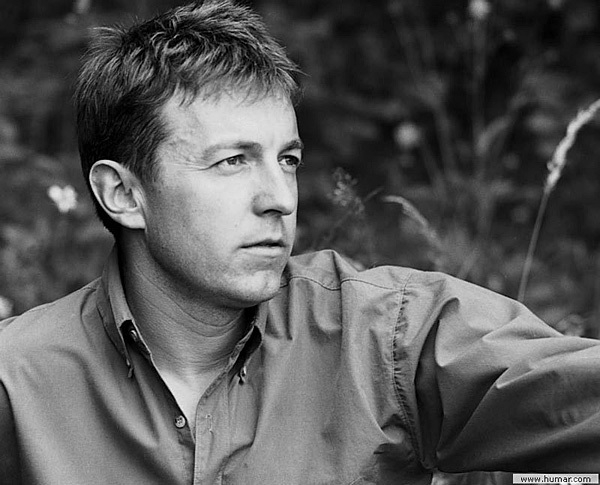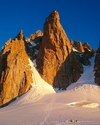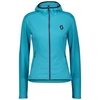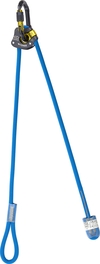Tomaz Humar
The charismatic Slovenian climber who became one of the world's leading mountaineers, remembered by British journalist Ed Douglas.

 1 / 4
1 / 4
Tomaz Humar
 arch. Humar
arch. Humar
In the summer of 1988, the Slovenian mountaineer Tomaz Humar, who has died in a climbing accident in Nepal aged 40, was a Yugoslavian soldier stationed in the Kosovo town of Podujevo. Humar loathed Slobodan Milosevic's plans for ethnic Albanians and, when his conscription ended, told his commanding officer that he wanted to go home. Instead, he was detained and maltreated before being abandoned with an unloaded rifle among a community hostile to Yugoslavian soldiers. He never forgot the Albanian who took pity on him and gave him the train fare back to Slovenia.
Humar's experience of the turmoil that tore apart Yugoslavia affected him deeply. He was a born individualist, but his experiences in Kosovo deepened his mistrust for authority, a process reflected in his meteoric rise to become one of the world's top mountaineers. Growing up under the world of Yugoslavian climbing, with its hierarchies and bureaucracy, he struck out on his own path to become a hero for a new nation.
He was born in Ljubljana and brought up in the northern Slovenian town of Kamnik, close to the beautiful limestone peaks of the Kamnik Alps. His father was a builder and his mother a shop assistant. Their lives were hard, but it was a close-knit family. His parents, however, did not approve when their first son took up mountaineering as a teenager.
Alpine sports are an integral part of Slovenian culture, and in Yugoslavia, mountaineering was a highly regulated activity. Novices had to adhere to a strict training programme and no one could move on to the next level without official approval. Those thought capable were chosen for expeditions by a small and powerful committee. No one could afford to climb abroad without club support, especially if, as Humar soon did, they had a young family to support.
The system was vulnerable to personal jealousies, but it produced many capable mountaineers, and after Slovenia declared independence from Yugoslavia in 1991, it soon began to be regarded as a leading force in world mountaineering.
Humar served his apprenticeship, and was picked out as a rising star. He was chosen to attempt a new route up Annapurna, the 10th highest mountain in the world, by Tone Skarja, the controlling hand of Slovenian expedition climbing. The expedition was successful, but Humar missed his chance to make the summit. Ordered down by Skarja, Humar ignored his leader's command and went back to the summit alone. The decision almost killed him and fatally undermined his relationship with the Slovenian climbing establishment.
Had this happened under the old communist regime, Humar's climbing career would have been finished. Instead, as Slovenia lurched towards democracy and a free-market economy, he found himself liberated from having to convince apparatchiks of his worth, as he scraped together enough sponsorship to function outside the old system and plan his own expeditions.
During the mid to late 1990s, Humar embarked on a series of climbs in the Himalayas that earned him a huge following in mountain-mad Slovenia and the respect of the international climbing community. First, with Vanja Furlan, he climbed a new route on the north-west face of Ama Dablam, a steep and beautiful peak within sight of Everest. It won him the mountaineering equivalent of an Oscar, the Piolet d'Or.
Two years later, in 1997, he attempted an even more impressive line on a peak of the Everest massif itself, Nuptse. Its west face is wildly beautiful and Humar's route up it was steep and dangerous. Humar climbed with Janez Jeglic, an established and popular star in Slovenia. For four days, they were repeatedly pinned down by bad weather. Their stove developed a leak, reducing their consumption of critical fluids and they almost suffocated in their bivouac tent when it was compressed by falling snow.
Jeglic did not lose his sense of humour about Slovenian climbing politics: "If we climb this, Tomaz," he said, during the third night, "we'll be happy for the rest of our lives, and if we don't, we'll make half of Slovenia happy."
Jeglic reached the summit the next day in ferocious winds, a little ahead of Humar, and waved his ice axe at him in celebration. But when Humar reached the top, there was no sign of Jeglic, just a line of footsteps that ended with his radio lying in the snow. Humar concluded that his friend had been blown off balance and fallen down the other side of the mountain, Nuptse's south face.
Marooned alone on top of a difficult Himalayan peak, Humar now faced a solo descent of the 2,500m wall they had just climbed. It was late, and when darkness fell, his torch failed and he lost his snow goggles. Only the voice of a friend at base camp heard over the radio kept him going. Hallucinating, dehydrated and suffering from frostbite, he narrowly escaped from an avalanche to emerge two days later at the foot of the face barely alive.
It took Humar several months to recover from his injuries, but the psychological scars never left him. His success on Nuptse was widely admired, but affection for Jeglic and gossip among Slovenian climbers about their ascent left Humar feeling that the wrong man had come home. After Nuptse, he mostly chose to climb alone and, after a final split with the authorities in Slovenia, became adept at generating public interest and sponsorship.
Ordinary Slovenians avidly followed his next adventure, a solo ascent of the south face of Dhaulagiri in 1999, on the internet. Humar did not quite achieve the climb he had planned, but Reinhold Messner stepped in to give Humar his nod of approval. Nor did Humar's new fans care too much about the minutiae of climbing ethics. Restless, expansive and charismatic, he talked about mountaineering in spiritual, even mystical terms, and saw himself on a quest for psychological healing. That message resonated with the Slovenian public and they loved him for it. Humar's public appearances eased his financial troubles and allowed him to begin building a house in the Kamnik Alps. Ironically, he then suffered terrible injuries in a construction accident, breaking both legs. It took him years to recover.
Humar's last high-profile expedition was in 2005, to the gigantic Rupal face of Nanga Parbat in Pakistan, a mountain wall almost 15,000ft high. Humar brought a small coterie of friends to base camp, including an astrologist, Natasa Pergar, to read his aura and that of the mountain and help him pick an auspicious date to begin climbing.
Humar misjudged and found him- self trapped low on the face in bad weather. Unable to move up or down, and with every twist and turn of his situation followed in real time on the internet, Humar's predicament prompted intervention by the presidents of Pakistan and Slovenia. A brilliant Pakistani helicopter pilot, Rashid Ullah Baig, managed to pluck him to safety before another avalanche of controversy crashed over his head.
Humar found it impossible to resist the alluring drama of the big mountains, but was more circumspect in how he went about it after Nanga Parbat. His last expedition – once more climbing solo – was to Langtang Lirung in Nepal, a mountain which had not been climbed since 1995, and was notoriously dangerous. He suffered fatal injuries, but managed to make one last call on his satellite phone. Rescue attempts were hampered by bad weather and he was found dead on Saturday.
Humar is survived by his ex-wife Sergeja and their two children, Tomi and Ursa.
Tomaz Humar, mountaineer, born 18 February 1969; found dead 14 November 2009
Ed Douglas
This article appeared in The Guardian
- Tomaz Humar found dead on Langtang Lirung
Humar's experience of the turmoil that tore apart Yugoslavia affected him deeply. He was a born individualist, but his experiences in Kosovo deepened his mistrust for authority, a process reflected in his meteoric rise to become one of the world's top mountaineers. Growing up under the world of Yugoslavian climbing, with its hierarchies and bureaucracy, he struck out on his own path to become a hero for a new nation.
He was born in Ljubljana and brought up in the northern Slovenian town of Kamnik, close to the beautiful limestone peaks of the Kamnik Alps. His father was a builder and his mother a shop assistant. Their lives were hard, but it was a close-knit family. His parents, however, did not approve when their first son took up mountaineering as a teenager.
Alpine sports are an integral part of Slovenian culture, and in Yugoslavia, mountaineering was a highly regulated activity. Novices had to adhere to a strict training programme and no one could move on to the next level without official approval. Those thought capable were chosen for expeditions by a small and powerful committee. No one could afford to climb abroad without club support, especially if, as Humar soon did, they had a young family to support.
The system was vulnerable to personal jealousies, but it produced many capable mountaineers, and after Slovenia declared independence from Yugoslavia in 1991, it soon began to be regarded as a leading force in world mountaineering.
Humar served his apprenticeship, and was picked out as a rising star. He was chosen to attempt a new route up Annapurna, the 10th highest mountain in the world, by Tone Skarja, the controlling hand of Slovenian expedition climbing. The expedition was successful, but Humar missed his chance to make the summit. Ordered down by Skarja, Humar ignored his leader's command and went back to the summit alone. The decision almost killed him and fatally undermined his relationship with the Slovenian climbing establishment.
Had this happened under the old communist regime, Humar's climbing career would have been finished. Instead, as Slovenia lurched towards democracy and a free-market economy, he found himself liberated from having to convince apparatchiks of his worth, as he scraped together enough sponsorship to function outside the old system and plan his own expeditions.
During the mid to late 1990s, Humar embarked on a series of climbs in the Himalayas that earned him a huge following in mountain-mad Slovenia and the respect of the international climbing community. First, with Vanja Furlan, he climbed a new route on the north-west face of Ama Dablam, a steep and beautiful peak within sight of Everest. It won him the mountaineering equivalent of an Oscar, the Piolet d'Or.
Two years later, in 1997, he attempted an even more impressive line on a peak of the Everest massif itself, Nuptse. Its west face is wildly beautiful and Humar's route up it was steep and dangerous. Humar climbed with Janez Jeglic, an established and popular star in Slovenia. For four days, they were repeatedly pinned down by bad weather. Their stove developed a leak, reducing their consumption of critical fluids and they almost suffocated in their bivouac tent when it was compressed by falling snow.
Jeglic did not lose his sense of humour about Slovenian climbing politics: "If we climb this, Tomaz," he said, during the third night, "we'll be happy for the rest of our lives, and if we don't, we'll make half of Slovenia happy."
Jeglic reached the summit the next day in ferocious winds, a little ahead of Humar, and waved his ice axe at him in celebration. But when Humar reached the top, there was no sign of Jeglic, just a line of footsteps that ended with his radio lying in the snow. Humar concluded that his friend had been blown off balance and fallen down the other side of the mountain, Nuptse's south face.
Marooned alone on top of a difficult Himalayan peak, Humar now faced a solo descent of the 2,500m wall they had just climbed. It was late, and when darkness fell, his torch failed and he lost his snow goggles. Only the voice of a friend at base camp heard over the radio kept him going. Hallucinating, dehydrated and suffering from frostbite, he narrowly escaped from an avalanche to emerge two days later at the foot of the face barely alive.
It took Humar several months to recover from his injuries, but the psychological scars never left him. His success on Nuptse was widely admired, but affection for Jeglic and gossip among Slovenian climbers about their ascent left Humar feeling that the wrong man had come home. After Nuptse, he mostly chose to climb alone and, after a final split with the authorities in Slovenia, became adept at generating public interest and sponsorship.
Ordinary Slovenians avidly followed his next adventure, a solo ascent of the south face of Dhaulagiri in 1999, on the internet. Humar did not quite achieve the climb he had planned, but Reinhold Messner stepped in to give Humar his nod of approval. Nor did Humar's new fans care too much about the minutiae of climbing ethics. Restless, expansive and charismatic, he talked about mountaineering in spiritual, even mystical terms, and saw himself on a quest for psychological healing. That message resonated with the Slovenian public and they loved him for it. Humar's public appearances eased his financial troubles and allowed him to begin building a house in the Kamnik Alps. Ironically, he then suffered terrible injuries in a construction accident, breaking both legs. It took him years to recover.
Humar's last high-profile expedition was in 2005, to the gigantic Rupal face of Nanga Parbat in Pakistan, a mountain wall almost 15,000ft high. Humar brought a small coterie of friends to base camp, including an astrologist, Natasa Pergar, to read his aura and that of the mountain and help him pick an auspicious date to begin climbing.
Humar misjudged and found him- self trapped low on the face in bad weather. Unable to move up or down, and with every twist and turn of his situation followed in real time on the internet, Humar's predicament prompted intervention by the presidents of Pakistan and Slovenia. A brilliant Pakistani helicopter pilot, Rashid Ullah Baig, managed to pluck him to safety before another avalanche of controversy crashed over his head.
Humar found it impossible to resist the alluring drama of the big mountains, but was more circumspect in how he went about it after Nanga Parbat. His last expedition – once more climbing solo – was to Langtang Lirung in Nepal, a mountain which had not been climbed since 1995, and was notoriously dangerous. He suffered fatal injuries, but managed to make one last call on his satellite phone. Rescue attempts were hampered by bad weather and he was found dead on Saturday.
Humar is survived by his ex-wife Sergeja and their two children, Tomi and Ursa.
Tomaz Humar, mountaineer, born 18 February 1969; found dead 14 November 2009
Ed Douglas
This article appeared in The Guardian
- Tomaz Humar found dead on Langtang Lirung
Note:
Ed Douglas
Ed Douglas is a British journalist who writes for the newspapers The Guardian, The Independent, The Observer.
Ed is a traveller, writer and mountaineer. His first book, about Everest, Chomolungma Sings The Blues, was published in 1997. Other books include Regions of the Heart, a biography of mountaineer Alison Hargreaves, who disappeared returning from the summit of K2 in 1995, and the first full-length biography of Tenzing Norgay, who climbed Everest with Sir Edmund Hillary in 1953, published by National Geographic in 2003. A former editor of the Alpine Journal, Ed is also an enthusiastic amateur climber, with winter ascents in the Alps and Himalayas
Ed Douglas
Ed Douglas is a British journalist who writes for the newspapers The Guardian, The Independent, The Observer.
Ed is a traveller, writer and mountaineer. His first book, about Everest, Chomolungma Sings The Blues, was published in 1997. Other books include Regions of the Heart, a biography of mountaineer Alison Hargreaves, who disappeared returning from the summit of K2 in 1995, and the first full-length biography of Tenzing Norgay, who climbed Everest with Sir Edmund Hillary in 1953, published by National Geographic in 2003. A former editor of the Alpine Journal, Ed is also an enthusiastic amateur climber, with winter ascents in the Alps and Himalayas
| Links Planetmountain | |
| News Tomaz Humar | |
| Links www | |
| www.guardian.co.uk | |
| www.humar.com | |
Latest news
Expo / News
Expo / Products
Climbing rope bag Petzl Split
Lightweight Women's Hoody with stretch insulation, quick-dry for intense training.
Adjustable lanyard for mountaineering and rock climbing by Climbing Technology
Karpos Rock Evo Pants, Perfect pants for any summer outdoor activity.
La Sportiva Jackal II are trail running shoes dedicated to the world of ULTRA races and long distance training.
Light and flexible hiking shoeit



 Copia link
Copia link
























